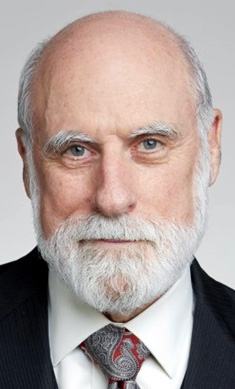


|
||
|
||
This blog by Vint Cerf, often called the “father of the Internet,” is part of a series of posts CircleID will be hosting from the ICANN community to commemorate ICANN’s 20th anniversary. CircleID collaborated with ICANN to spread the word and to encourage participation. We invite you to submit your essays to us in consideration for posting. (You can see a video interview of Cerf done for ICANN’s History Project here.)
* * *
In the fall of 1998, I was present at the first meeting of the ICANN Board which was then made up of very senior, prominent parties from a broad spectrum of sources.
Much to her credit, Esther Dyson accepted the position as the first Chair of the ICANN Board for the newly birthed organization. I was in attendance in support of the nomination of Michael Roberts as the first ICANN CEO.
It was a time of uncertainty. The dot-boom was in full swing, there was no clear business model to support the organization, and the broad outlines of organizational structure were shaped by a strong, multistakeholder philosophy.
Looking back with the perspective of two decades (only two!), it is remarkable that from its tiny origins, ICANN has evolved to become a global institution whose mandate remains central to the operation of the Internet and World Wide Web.
The path of that evolution was and still is largely unpredictable and yet, thousands of people continue to devote time and energy to shaping the arc of ICANN’s path in history.
Sponsored byRadix

Sponsored byWhoisXML API

Sponsored byCSC

Sponsored byVerisign

Sponsored byVerisign

Sponsored byDNIB.com

Sponsored byIPv4.Global

Vint Cerf is a remarkable leader, and I believe that his role in the success of the Internet is, if anything, underestimated. While he is a fine engineer, he is first and foremost an outstanding socio-political leader. Vint created the Internet community, and he guided the community’s design of governance institutions, for technical standards (IAB/IETF), for itself (ISOC), and for system regulation (ICANN).
That said, there were some not-so-nice periods in ICANN’s history, and Cerf’s brief comment here glosses over two of them.
First, the most significant directors on ICANN’s first board were the people who were *not* there. As mandated by the NTIA at ICANN’s founding, almost half the directors were supposed to be elected. However, those elected seats were kept empty for years; the NTIA mandate was never fully implemented. Instead a partial board was appointed, the elected seats were left empty, and the initial subset of directors quickly began making policies (e.g. the UDRP). That violated the spirit of ICANN. The board was packed with directors chosen by insiders, and representative mechanisms imposed by NTIA were circumvented.
Vint’s second gloss concerns the actual people who were appointed as directors. While the original directors were people of high standing, they were also mostly people with little background in Internet names and numbers. Their lack of expertise left them dependent on the staff and other insiders for advice on how to decide things. In effect, the staff ran ICANN, while those original board members merely lent their reputations to legitimize decisions.
These combined tactics of blocking the elected directors and filling the appointed seats with dependent directors left the staff and the “old guard” (Vint and others) effectively in control of ICANN.
These issues reflect a tension in Internet governance. There was tension between top-down governance (by Vint and a handful of other outstanding individuals) and bottom-up governance (by the mythical “Internet community” and by the IETF.) In his comments here, Vint has glossed over how the folks at the top employed some not-so-nice tactics to assert control over ICANN. Some might say that those tactics were necessary, but in any case they were employed and should be remembered.
Thanks for compliments and comments. The early ICANN was unfunded and at considerable risk as it tried to fashion a framework within which to function and to sustain operation. Not all players in the Domain Name business welcomed the arrival of ICANN. I remember tough business model debates and some lawsuits. It is fair for the writer to draw attention to the early and difficult period of ICANN’s birth. I am more sympathetic to the ICANN side of the story but agree that it would be historically interesting to have a factual accounting.